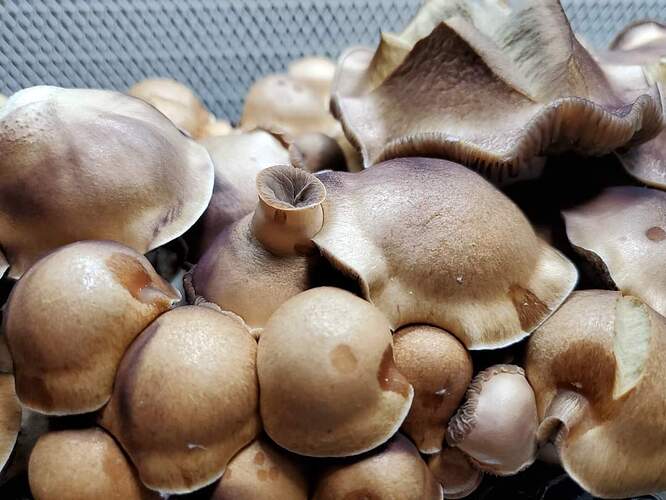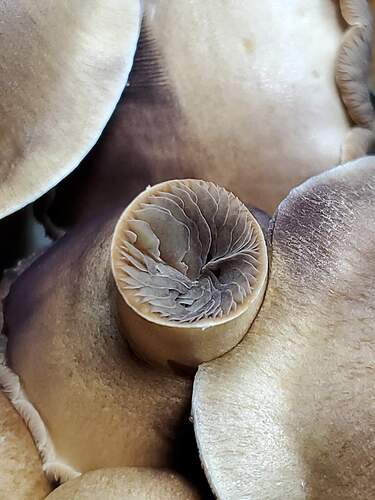Seeing as I am here again, I guess I keep finding the red in the blue store.
All jokes aside, for my mycologist friends… I had another inquiry. I have been having amazing success with agar ang grain. But with liquid culture, I have been struggling.
I have made roughly 25 jars, and only about 10-12 have grown without issue.
I am using filtered water and light malt extract
I blend my ratios together
filter
jar
sterilize for 45-60 minutes at 15psi
Once cooled
I work in a sterilized room where no air flow has occurred for 20-30 minutes
I spray my equipment with Lysol and the alcohol
I flame sterilized my scalpel and syringe between each jar (at this point I have attempted both mycelium transplant methods)
and I do all this in front of my small flow hood
Is it my technique? Or is this just how LC tends to act if you are not in a decent super clean and filtered air lab?
1 Like
What percentage of sugars are you going for in your nutrient broth? Or at least what’s your recipe? It’s getting growth (albeit not always the one you want) so I doubt it’s to do with that but it’s always good to know.
No you don’t need a filtered air lab, you don’t even need a ffu/lfh so I doubt that’s the thing contaminating your lc. Those things make life easier but they don’t replace good technique.
LC is notoriously frustrating as it contaminates easy and there’s not much for visual identification, many times it’s sterile technique that’s causing the issue
Sometimes there’s some hard to spot bacteria in the master culture that won’t have terrible effects in grain but will flourish in the sugar rich LC, there would be signs in the grain but most experienced growers should spot this and not choose that culture for lc work.
Are you starting from agar dish? Or a tissue sample directly from the mushroom?
Also Lysol can cause rosecomb, I just use 70% iso and have no issues past when I’d let my technique get sloppy
…can you define the issue a smidge better?!?
Folks are guessing contamination…but you haven’t really given enough information to warrant that imo.
You would (for instance) have “issues” if you neglected to agitate, or over agitae
3 Likes
And hurt feelings from a one-off statement apparently.
So for my first couple of batches I was 4g LME to 300 ml water.
The last batch I dialed it back to about 3.5g to 300 ml.
@cyclopath The jars usually get cloudy, and when I open them, they have a sour smell. I assume from my reading it is bacterial infection, but I can not figure out how I am running into this issue.
@SubstituteCreature no hurt feelings, I just enjoy being the one to prove people wrong for a change
2 Likes
You could easily cut that lme amount by half and have enough sugars. 2-4g for 1000ml worked great for me
Many find 3.5-4% sugar to work well, I like to go light on nutrients but I also don’t store lc.
High nutrient LC has always been more finicky for me so lower is better in my book, also saves on supplies.
Cloudy/hazy lc that started clear is almost guaranteed bacteria. The broth should remain clear throughout the growth but even healthy looking lc is suspect until proven on agar
Are you using agar or a tissue sample to start your lc?
3 Likes
This…
For storage LC I’m using 2g/L sorghum syrup
For production LC Ive been doing a potato infusion base with sorghum and peptone
I don’t trust the guys that say LC is just your agar recipe without the agar
4 Likes
I’ve never deliberately liquid cultured fungi. Done a lot of plant cells (and occasionally had fungi along for the ride). 100’s of liters of bacterial cultures too.
none were done in jars.
I’ve mostly used Erlenmeyer flasks (125ml —> 5liter) and a gyrotory incubators.
I used foam stoppers with a Alu foil covering to allow gas exchange. And ran the shakers at ~60rpm
Fungal contaminants showed up as fluffy spheres under these conditions (seemed very happpy)
Given how important aeration (proper agitation) was to both plant and bacterial cultures, I’m wondering how you are achieving this part. (Anyone?)
What I see are folks throwing mycelium in 1/2 full canning jars and just leaving the things on a shelf (with occasional shaking?).
Doesn’t seem like the right approach to me.
They should grow considerably faster if appropriately aerated…
5 Likes
Proper aeration is just as big in fungi as plant and bacteria LC, many people just get by shaking jars which works fine but you got to manually shake em daily (usually they’ll toss in some marbles or glass pieces to help break up the myc) or they put a stir bar in the jar and put it on a mag stirrer daily for aeration.
If you’re doing hobby-full house production (2k sqft or less) mag stirrers are where it’s at price to production value wise, those fancy incubators would be best but I’m frugal.
Canning jars and media bottles both work great, I like boro media bottles personally.
2 Likes
Thank you!
i reckon these scale better than stir bars…
https://www.ebay.com/itm/154549470837?hash=item23fbddc675:g:mCQAAOSw8v1hAuJj
Not terribly expensive used. The older ones live almost forever.
3 Likes
A quality stir bar is cheaper than a quality incubator shaker and like I said I’m frugal.
The incubator shaker is definitely the better option, not only for the user effort but for table/floor space. I know I’ve seen the larger style 80l ones that retail (domestic) for 4-5k in a large “warehouse” (these dudes had like 12k sqft of fruiting rooms iirc) sized grow but they were doing literal tons of cordyceps and other medicinals.
A house sized op (<2k sqft) could pretty easily get by with 2 quality mag stirrers that would run while they do daily transfers and sub prep but a quality 1-2k retail shaker would be worth it on my eyes at that level
Hobby level growers (from closet up to a full room) should just stick to a quality secondhand mag stirrer or two unless ya got the cash to spend and really like top of the line equipment.
3 Likes
So I used agar slices for about half the samples, tissue samples scraped from agar for some and the other couple I used pre bought syringes from northspore. Surprisingly… at least to me, the agar and tissue did way better than the syringes did. Could this be from mixing media or again is this most like due to me having to high of sugars?
Spore syringe or liquid culture syringe?
1 Like
Yeah I’m a passive LC grower.
I make sure to shake at least 1x for the first 2-3 days after that it just chills. Usually takes about 10 days to get the culture large enough that I want to use…
Constant agitation w/ stir bar takes it to about 5 days
1 Like
The ones that were purchase were LC syringes. I did receive a majority of them from my brother who had used them in prior attempts himself which I could imagine caused some contamination before I ever got them. But I also wonder if my high sugar to water ratio has played a role like @SpousalPainter8 had stated
And back to this… I am baffled, you believe Lysol caused rosecomb? Or this is actual data you have found in your mycological studies? I would think something designed to kill bacteria would be amazing friend in this environment. What am I missing?
Anything that’s a petroleum based product (which Lysol counts as) can/will cause rosecomb to occur.
They’re safe to consume and everything just an ugly (imo) environmental mutation.
1 Like
Do you have any good literature on this particular contamination, that you would recommend? Googling a bit now, I am not familiar with it at all. I have probably had it, and had no idea what I was looking at
I don’t have any papers of the particular process that causes petroleum based products to cause malformations in the form of rosecomb and vertigo but it’s a well documented occurrence.
I know it’s even mentioned in one of stamets old books, not someone I care for but it shows it’s been known.
4 Likes


